A little Internet sleuthing shows that descriptors like “aspiring plant lady” and “plant mom” abound on friends’ social media bios, emphatically announcing their love and respect of houseplants. The words “crazy plant lady” have come to evoke feelings of pride and joy for many (myself included). The aspirations of the gen z and millennial generations to connect with nature, to earn the “green thumb” badge of honor, seem to be firmly planted so to speak.
So, what to do with all those plants we’re all working so hard, and seemingly so proudly, to keep alive? Why go to the trouble to water them weekly, prune them when they get “leggy,” haul them outside in the summer and inside in the winter and carefully repot them when a larger home is needed? The answer, my friends, is because plants benefit us in so many ways. They enliven a space, making our homes and offices come alive with lush, gorgeous greenery to which no tchotchke can compare. They also reduce stress and anxiety (according to a study published in the Journal of Physiological Anthropology), and they can remove up to 87 percent of air toxins in 24 hours (according to a major NASA research project). In 2019, a medical practice in Manchester, England, decided to prescribe plants to their patients struggling with anxiety, depression and loneliness. Caring for a plant can be rewarding, especially when the living plant is happily growing and thriving. So, they’re aesthetically beautiful, mentally beneficial, and they improve our health by removing toxins from the air we breathe. Three big wins for plants!
If you’ve been collecting plants but are struggling with how to maximize their decor potential in your home, we’ve rounded up some ideas and images for inspiration. Whether you’re a veteran plant collector or are just getting started, here are some creative ways to consider bringing more plants into your spaces…
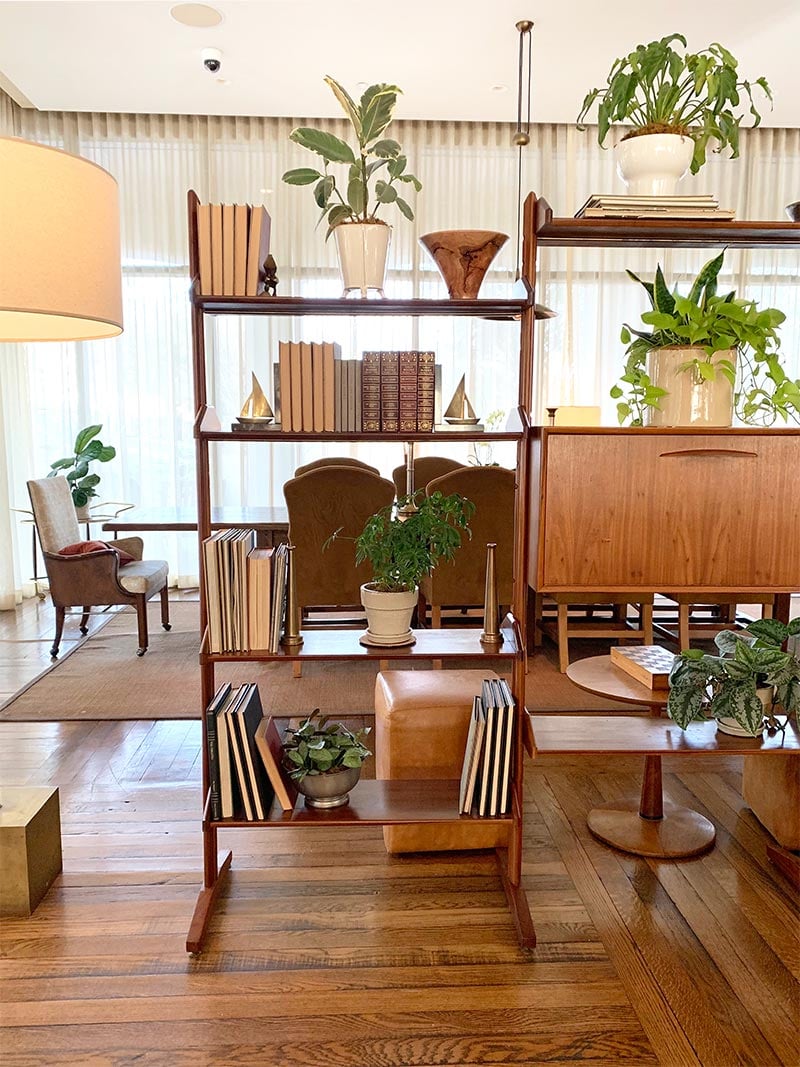
Styling Bookcases and Shelves
Pair potted plants with your favorite artwork or framed photos. This provides more visual interest and helps “frame” the plant. Photos and artwork coupled with your plants also allow you to introduce colors that match the rest of your space into the shelf styling.
Place trailing plants on higher shelves; let the tendrils cascade down.
Intersperse plants with stacks of books, or use pots as bookends.
Consider a unified color palette for your pots, for example all white or all terracotta pots. This will help the plants of different varieties feel unified.
Note: make sure wherever the shelf is placed, there’s plenty of light to meet the needs of your specific variety (typically full sun, partial sun or low light).
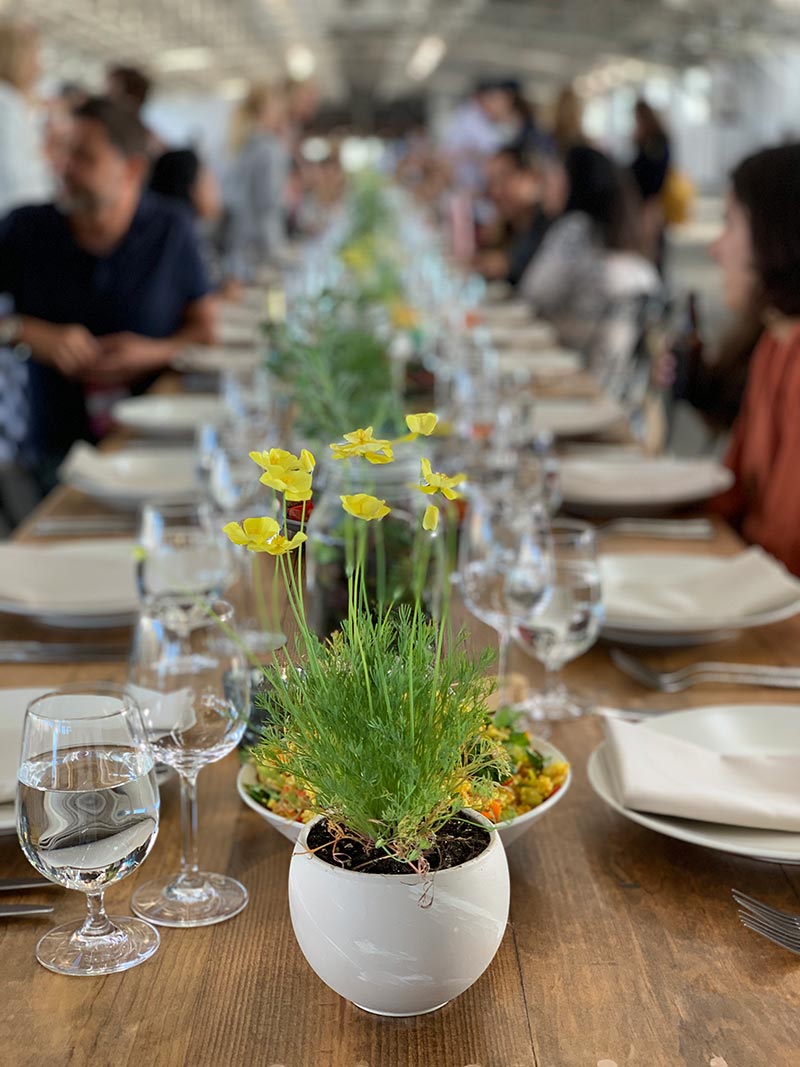
Creating a Tablescape
Think of your table not just as the place you eat, but as an opportunity for a visual “tablescape,” e.g. a blank canvas for decorating with cut flowers, candles and/or potted plants. If you can picture the last wedding you were at, this is the at-home version of the elaborate decor common at big seated events.
The fresh flowers tablescape:
- Use fresh-cut flowers and clippings from the yard or your local plant store.
- Start with a low-lying base of greens (think evergreen twigs, stems of eucalyptus, kale leaves or leaves from cut flowers like tulips).
- Organize fresh-cut flowers in vases of alternating heights on top of the base of greens. Add candles in between the vases to create a warm glow.
The potted plant tablescape:
- Gather potted plants from around the house to place on the tablescape.
- Start by placing your widest and tallest in the center of the table
- Place the rest of the pots in descending size order so that the smallest pots are at the ends of the table.
- Don’t forget to leave room for serving dishes!
Consider adding a long runner to a rectangular table, or a circular charger or placemat to a circular table. This will create a visual border for your plants.
Depending on the lighting that hits your dining table, you can either leave the plants post-dinner (party), or return them to their rightful place on your shelf/windowsill/etc. Plants are mobile; they don’t have to stay in the same spot in your home at all times (in fact, sometimes moving a plant’s location will give you a hint as to the lighting conditions it prefers).
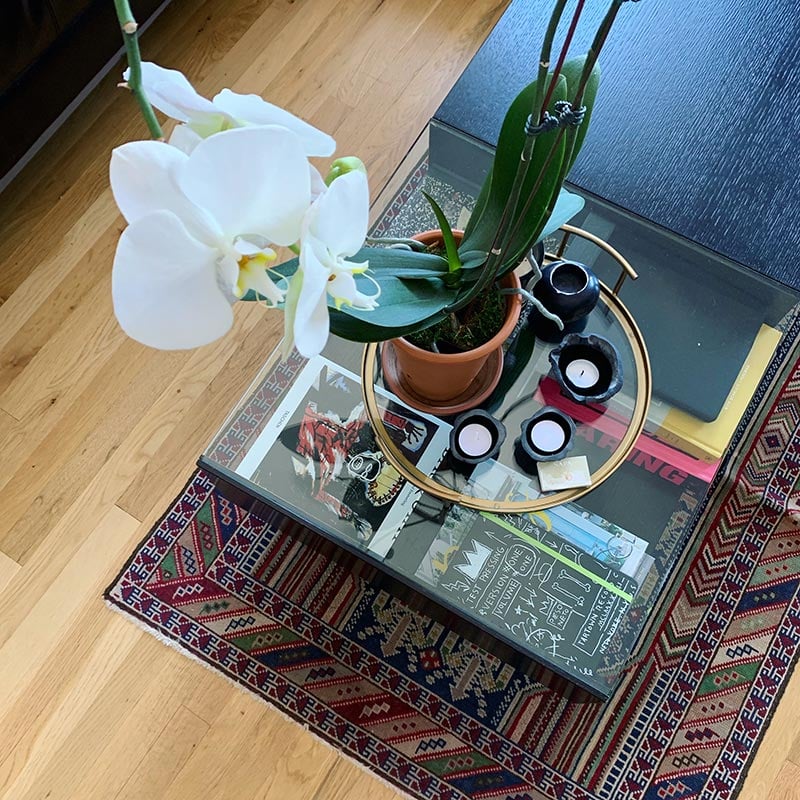
Decorating a Coffee Table
Style cut flowers with coffee table books to create layers of visual interest.
A gold and glass bar tray adds a visual boundary for cut flowers to rest on. Play with trays and textiles that feel right for the shape, size and finish of your coffee table.
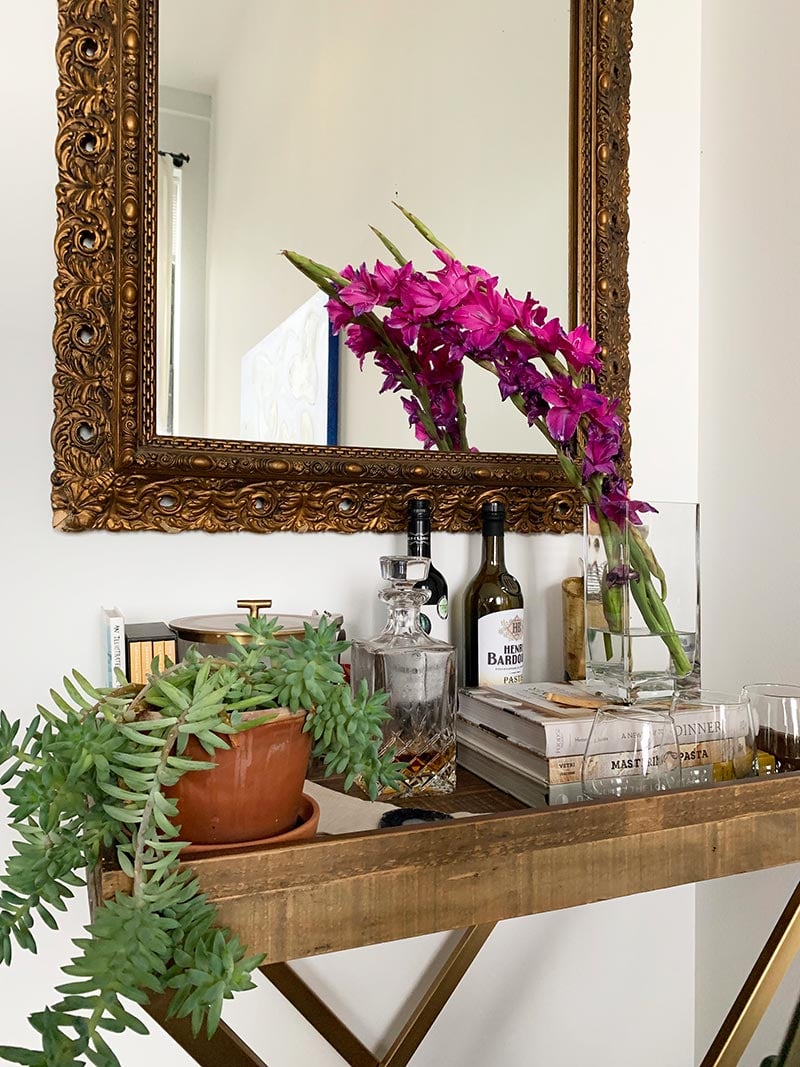
Greening Your Bar Cart
Feature hanging plants with tendrils, like this burro’s tail sedum, a succulent variety that is super easy to care for and often grows down to overflow its container.
Pair your potted succulents with taller potted plants or a vase of cut stems, like the blooming phalaenopsis orchid or the fuchsia gladioli.
Use books to create varying heights.
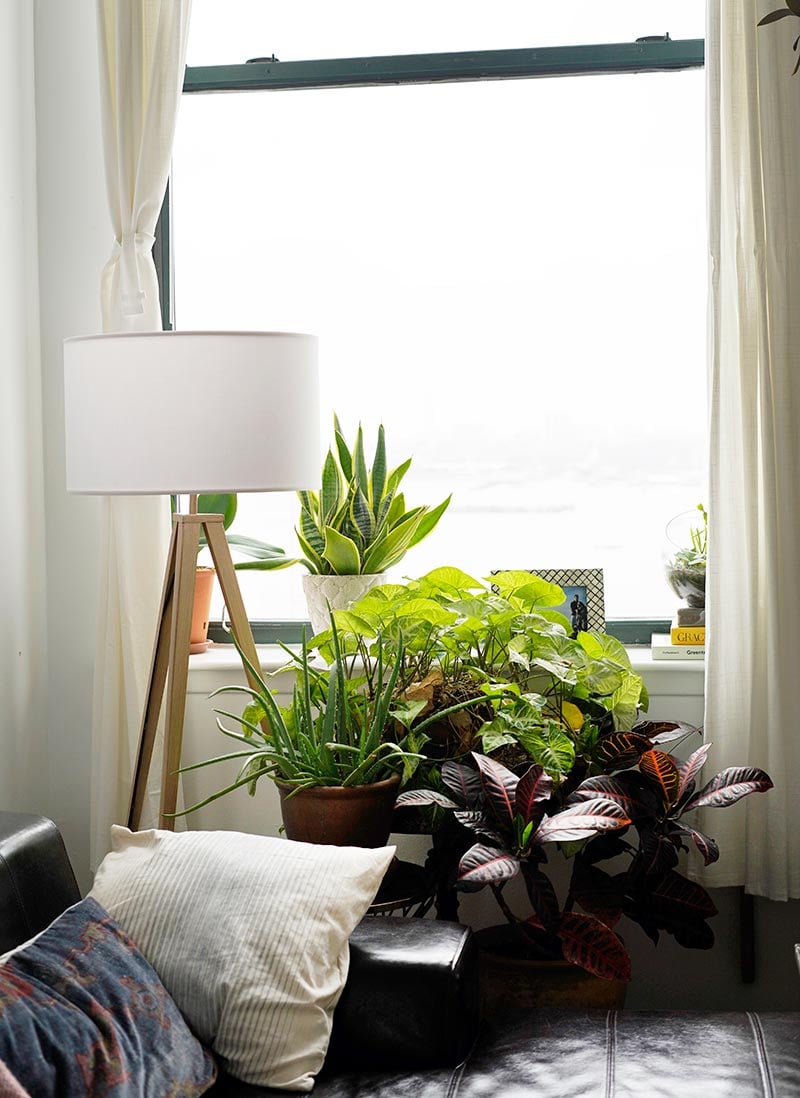
Dressing up a Windowsill
Keep the rule of three in mind. On the left you can see the hanging oxtail forms the top of a triangle: the begonia balances the bottom left, and the tall amaryllis leaves anchor the bottom right. Smaller succulents adorn the windowsill.
Stick to a color palette. The burgundy in the embroidered pillowcase is mirrored in the dark red oxtail and the dark red begonia plants.
Combine textures: in the photo on the right, the smooth aloe plant mixes with the arrowhead plant and croton leaves, creating a sea of texture.
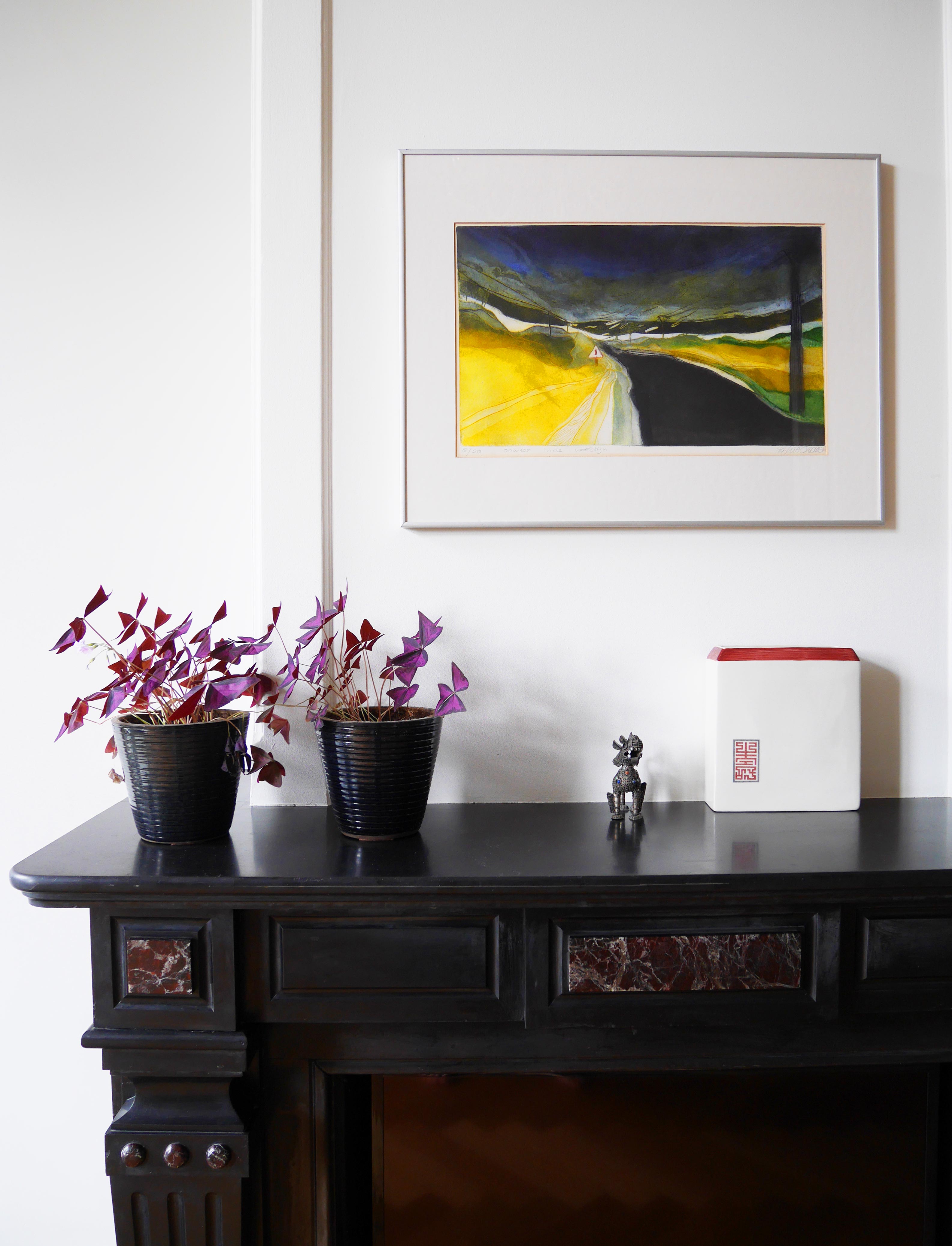
Styling a Fireplace Mantle
The minimalist mantel:
- Two oxtails in black ceramic pots adorn a stately black mantel in this Amsterdam apartment (bottom). The pair of similar containers creates a uniform look.
- The matching potted plants are flanked by a simple black and yellow painting, which is not large enough to anchor the entire mantel. The potted plants help to round out the space.
The maximalist mantel:
- Mix plants with seasonal props: in this example, a strawberry begonia potted plant is centered on the mantel, then adorned with gourds, all stacked to create various heights.
- Add cut flowers in a ceramic vase for height.
- Add dried flowers to overhang the mantel; Amaranthus is great for this (check out The Quiet Botanist online for lots of colors.They’ll ship you dried bunches!)
- Stacked gourds overflow from the non-functional fireplace in the example at left, from Blue Hill Stone Barns restaurant in upstate New York.
We’ve walked through a half-dozen examples of using plants to decorate in the home, including:
- styling bookcases and shelves
- creating a tablescape
- decorating a coffee table
- greening your bar cart
- dressing up a windowsill
- styling a fireplace mantel
Hopefully this provides some inspiration for greening your space. Plants truly make our homes and offices come alive. They rival the beauty of any luxurious piece of art and can be budget-friendly décor options. Aesthetically, greenery brings so much to a space. Mentally, caring for a plant can provide such a deep source of pride. To “raise” a plant from seedling to maturity is gratifying, and can even help with loneliness and depression. Physically, plants are the yin to our yang; we breathe oxygen and exhale carbon dioxide, and they absorb carbon dioxide and release oxygen back into our spaces.
As we’re rounding out a full year since the start of the COVID-19 pandemic, beautifying the spaces we spend so much time in, taking care of our mental well-being and prioritizing our physical health and air quality are all top of mind. Maybe some new plant friends can help you along this spring, becoming staples in your home, expertly styled to maximize the beauty of your space as well as your mental and physical health.
















